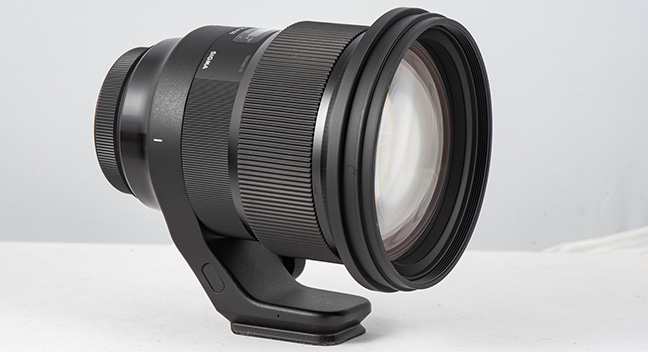
Sigma 105mm f/1.4 DG HSM Art test: the ‘bokeh master’
Posted on Oct 4, 2018
Sigma’s already great reputation for excellent-quality optics has only been enhanced further with its Art series, especially the primes, winning plaudits and critical acclaim from photographers everywhere. Its latest introduction is the 105mm f/1.4 DG, a lens marketed by Sigma as the ‘bokeh master’, and the flagship of the f/1.4 Art family.
The Sigma 105mm f/1.4 is full frame and APS-C compatible, features Sigma’s impressive HSM autofocusing, and comes with a tripod collar with an Arca Swiss compatible foot. The collar can be removed, which is a good thing given that the lens is very likely going to be used for portraits, because it frees you up and does save a few grams. You also get a deep, lockable lens hood (made from carbon fibre reinforced plastic) but, given the large acreage of expensive glass at the front, I’d budget £100-120 for a 105mm UV filter.
Its impressive girth and large glass frontage (that its super-fast aperture needs) still doesn’t prepare you for this lens’s heft. It is a beast, weighing in at 1645g – the only lens of similar spec currently on the market is the Nikon 105mm f/1.4 E, and that is a mere 985g.

I used the lens on a couple of Canons, the EOS 6D Mark II and the EOS 5D Mark IV. You won’t need telling that the lens was very much the senior partner on both DSLRs, but that didn’t compromise handling and I thought both camera/lens combinations worked well. That said, and clearly we are all different, but from my perspective holding the camera up to my eye was not something I’d like to do for long. The nature of portrait photography does mean you don’t have the camera up to eye for long and that is a good thing, but a day-long shoot with this lens and your forearms will certainly know all about it.
Its heft also means you need to make sure your camera-holding technique is up to scratch. I soon remembered to keep my left elbow tucked into my ribs for maximum support, especially as there is no built-in image stabiliser.
Autofocusing with the two test cameras was impressive, with great responsiveness in a variety of lighting and contrast situations. It was also speedy, although marginally slower compared with the Canon 70-200mm f/4 I had on test at the same time. The Sigma’s broad manual focus barrel gives full-time override, so no problem fine-tuning AF. Manual override is occasionally needed with this lens when you are shooting at the wider apertures because there is not much depth-of-field. Try a close-up portrait, for example, and you need the subject to be straight on to you if you want both eyes sharp – if you want to enjoy this lens’s ‘bokeh master’ qualities just be extra careful with focusing and don’t assume the focus is spot on because the camera AF confirmation LED says so. Once you have taken a shot, and assuming you have the time, it is worth just checking that what you want in focus is in focus.

I did some handholding tests with the lens on the EOS 5D Mark IV held up to the eye. While I got some sharp pictures at 1/30sec and 1/60sec, I personally would prefer to be at 1/125sec and above, and with long shooting sessions when arm fatigue is a factor even that might not be enough.
The sharpness you get from this lens is impressive. There’s no point having a fast aperture lens if you can’t use it at its widest setting, but in the case of this Sigma I’d be happy shooting wide open and enjoying the very limited depth-of-field and bokeh. At f/1.4, fine detail was very nicely recorded across the frame. My test shots are full of contrast and have a lovely crispness to them. Stopping down one and two stops does take quality to an even higher plane but the benefits are minimal because the bar is already at a high level. In fact, you could use this lens at any aperture – including f/16 – knowing that you’ll get lovely crisp, detail-packed pictures.
Shooting towards the sun, even with the lens hood in place, can result in ghosting. This can actually look good and add to the image in the right situation, but worth being aware of in case you don’t want it.
Verdict:
There is no doubt that the Sigma 105mm f/1.4 DG HSM Art is a deeply impressive lens, with great sharpness and the potential for gorgeous bokeh. If there is a potential weakness, it could be you and your technique. To get the most from this beast – a beautiful one, admittedly – you need to make sure your camera skills are up to scratch and that the camera and lens are working in perfect harmony, because there is no room for error at its wider apertures. When it all comes right, though, I can see why Sigma says this is its f/1.4 Art flagship.
Pros: Lovely bokeh, sharpness, Arca Swiss fit tripod collar supplied
Cons: It’s seriously hefty, 105mm filter thread
As featured in issue 58 of Photography News.




